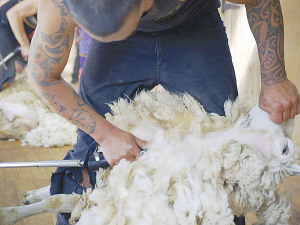Get ready for Moving Day
Moving Day is a big day in the farming calendar and requires good planning and communication to ensure success.
 Controlling the risk of flystrike could include actions such as shearing, crutching, dipping and/or moving sheep to higher ground with cooler temperatures and higher wind speed.
Controlling the risk of flystrike could include actions such as shearing, crutching, dipping and/or moving sheep to higher ground with cooler temperatures and higher wind speed.
Warm summer weather heightens the risk of flystrike.
However, there are steps farmers can take to make sheep as unattractive to flies as possible this summer.
Will Halliday, Beef + Lamb New Zealand’s senior advisor biosecurity and animal welfare, says the best and most effective approach to preventing flystrike is to use a combination of strategies also known as Integrated Pest Management (IPM).
He says IPM aims to keep pressure on the pest throughout its lifecycle by using a combination of chemical and non-chemical tools.
“It’s about attacking maggots and flies from different angles at different times.”
For example, weekly monitoring for the four blowfly species that cause flystrike (Australian green blowfly, European green blowfly, Brown blowfly and Hairy Maggot blowfly). Using small offal-baited fly-traps will detect when these flies are active which can then trigger a management response.
It could include shearing, crutching, dipping and/or moving sheep to higher ground with cooler temperatures and higher wind speed.
During high-risk periods, intensive grazing should be avoided if possible and hot-spots on the farm identified and avoided. These could include sheltered, scrubby gullies, patches of thistles, bush lines and the lee of shelter-belts.
Chemicals play an important role in the prevention and treatment of flystrike, over-reliance can lead to resistance.
It is important to only use chemicals known to be effective on individual farms and use different chemicals to treat an active flystrike lesion than those used for flystrike prevention.
Halliday adds that the Managing Flystrike and Lice publication put together by Beef + Lamb New Zealand, Merino NZ and Sheep and Beef Cattle Veterinarians explains the lifecycle of pests, helps decipher chemical product labels and applications.
“It is an excellent resource to help farmers put together a management plan for the prevention and treatment of both flystrike and lice.”
Preventing Flystrike
Bankers have been making record profits in the last few years, but those aren’t the only records they’ve been breaking, says Federated Farmers vice president Richard McIntyre.
The 2023-24 season has been a roller coaster ride for Waikato dairy farmers, according to Federated Farmers dairy section chair, Mathew Zonderop.
Ministry for Primary Industries (MPI) director general Ray Smith says job cuts announced this morning will not impact the way the Ministry is organised or merge business units.
Scales Corporation is acquiring a number of orchard assets from Bostock Group.
Family and solidarity shone through at the 75 years of Ferdon sale in Otorohanga last month.
The Ministry for Primary Industries (MPI) has informed staff it will cut 391 jobs following a consultation period.

OPINION: This old mutt well remembers the wailing, whining and gnashing of teeth by former West Coast MP and Labour…
OPINION: Your canine crusader gets a little fed up with the some in media, union hacks, opposition politicians and hard-core…